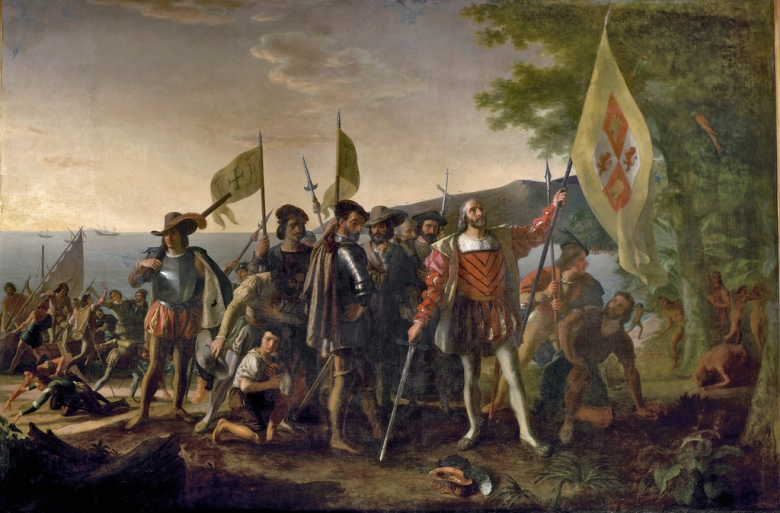
Native people are practically invisible in Landing of Columbus, a painting by John Vanderlyn, on display at the Rotunda of the U.S. Capitol. Image from Architect of the Capitol
Steve Russell, a member of the Cherokee Nation, continues his look at religious fundamentalism:
Indians had the misfortune to encounter Christianity late in its maximum violence phase as authorized by the Pope and practiced by the Spanish and Portuguese. Those colonists who believed Indians were human beings with souls normally considered “convert or die” to be condign choices. You know, like ISIS? Christianity was still killing for theology not that long ago, and the truce in Ireland is not even now a sure thing. Islam, the youngest of the big three, is farthest from escaping its violent phase. Indian spirituality was ill equipped for collision with hyper-aggression by divine command. I can think of one instance in all our post-contact history when Indians proselytized, and that would be the Ghost Dance. At least since the fall of the Aztec and Incan Empires, we do not trouble ourselves about what others believe. While I cannot speak for others, I can say my own traditions do not turn away from converting non-believers because of tender concern for tolerance as much as the idea that ultimate truth will always be in control—with or without help from believers. Most of the tribal traditions with which I’m familiar contain this thread of practicality. Violation of fundamental principles carries its own penalty. This practicality has a down side, which is that a secular failure becomes a spiritual failure and leaves those who survive the failure vulnerable to the belief system served by those who prevailed.Get the Story:
Fundamentalism II: God Loves Genocide (Indian Country Today 10/3) Related Stories:
Steve Russell: Religious fundamentalism courtesy of county clerk (9/30)
Join the Conversation